Feature 012 • Jan 8th 2024
- Photographs by Ron Rakow, Written and curated by Ricki Blakesberg of the Retro Photo Archive
During the lockdown days of the pandemic, Josh Baron (who was working with my dad, Jay Blakesberg) began interviewing Ron Rakow for a Grateful Dead book project. Rakow is known for co-managing the Grateful Dead in the late ’60s, and in the early ’70s founded Grateful Dead Records. During the interview, Rakow revealed that when he worked with the Dead, he always carried a Nikon camera…and that he knew how to use it. Rakow stated he had thousands of unseen and mostly unsorted images, somewhere in storage. After numerous attempts to connect with Rakow and search his space for these alleged archives, my dad, Jay was finally able to arrange to meet with Rakow in his Southern California storage locker, where he came upon a Holy Grail of unseen photographs from the 1960s and 1970s.
The first inclination that Jay had discovered the images he was hunting for was found written on the spine of a 3-ring binder: “710 Ashbury, 1967”. Of course, Jay instantly knew that highly recognizable address. 710 Ashbury was the home of the Grateful Dead during the halcyon days of the “Summer of Love.”
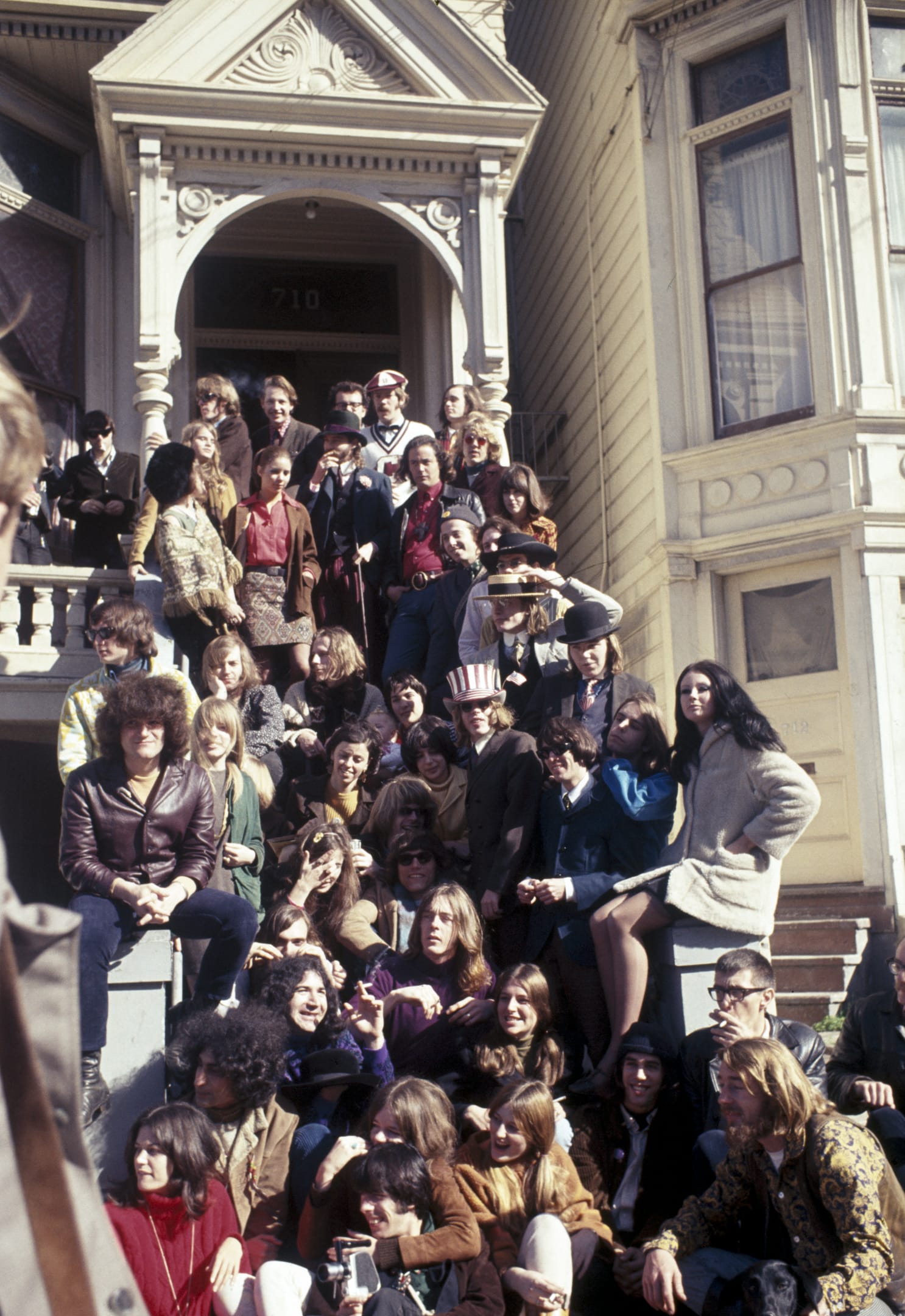
Front steps of 710 Ashbury home of the Grateful Dead in February of 1967. This was a photo op with the big bands of the Haight Ashbury in San Francisco including the Grateful Dead, Jefferson Airplane, Janis Joplin with Big Brother and The Holding Company, Quicksilver Messenger Service and The Charlatans along with friends, family and managers. After gathering at 710 Ashbury they all walked down to the panhandle in golden gate park for a group shot of just the bands and a group shot of just the managers.
As an insider, Rakow’s lens captured uniquely iconic and intimate moments of the Grateful Dead, and of the cultural climate of the time happening in front of him. It would be through his then girlfriend, Peggy Hitchcock, that Rakow would come to meet psychedelic pioneer Timothy Leary. Peggy and her brothers had made their upstate NY home, “Millbrook,” available to Dr. Leary for his intentional and legal psychedelic research, and it was there that Rakow and Leary became friends. Over time, Rakow documented many of Leary’s escapades; from the Millbrook wedding of Art Kleps (Millbrook biographer) to Leary’s international exploits as a fugitive, after the Weather Underground helped to break him out of a California jail in 1970. These images and many more were found in the archives of Rakow’s storage locker on that fateful day.
Together, we scanned and edited about 900 color slides and another 50 or so rolls of B&W negatives: a plethora of heretofore unseen delights. Once I started going through the scanned images, I quickly realized the beauty in the color captured on transparency film. They were vibrant, and managed to capture the psychedelic nature of the times in a way I hadn’t seen before. The images exude an aura of the 60s and 70s in a way that is very hard to describe and even harder to replicate. It made both my dad and I emotional to look through for a couple of reasons; for Jay, the photos transport him to a not-so-distant past and bring up memories and feelings of shows, tours, and trips – both literal and figurative. For me, they evoke a feeling of parallels – so much of what was happening back then – musically, politically, stylistically, and artistically – can be seen and felt today. I feel a kindred spirit when I look at these photos, and I think other people will too. Viewing Rakow’s images from this intimate and inside perspective feels like a rare privilege, where we have been given a backstage pass to see a world that was hidden from view until now.
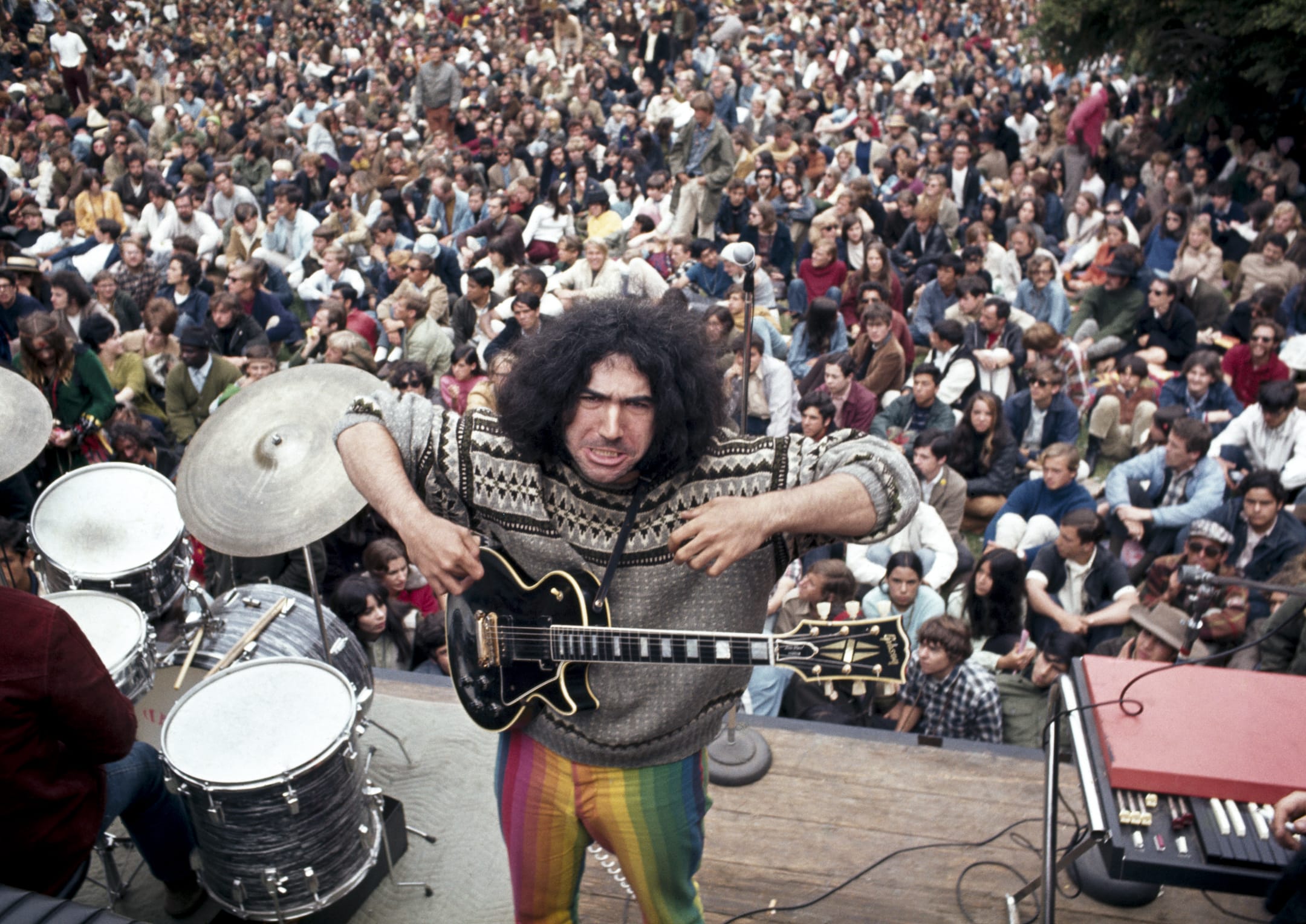
Jerry Garcia in playing a free concert in Golden Gate Park, San Francisco - July 1967
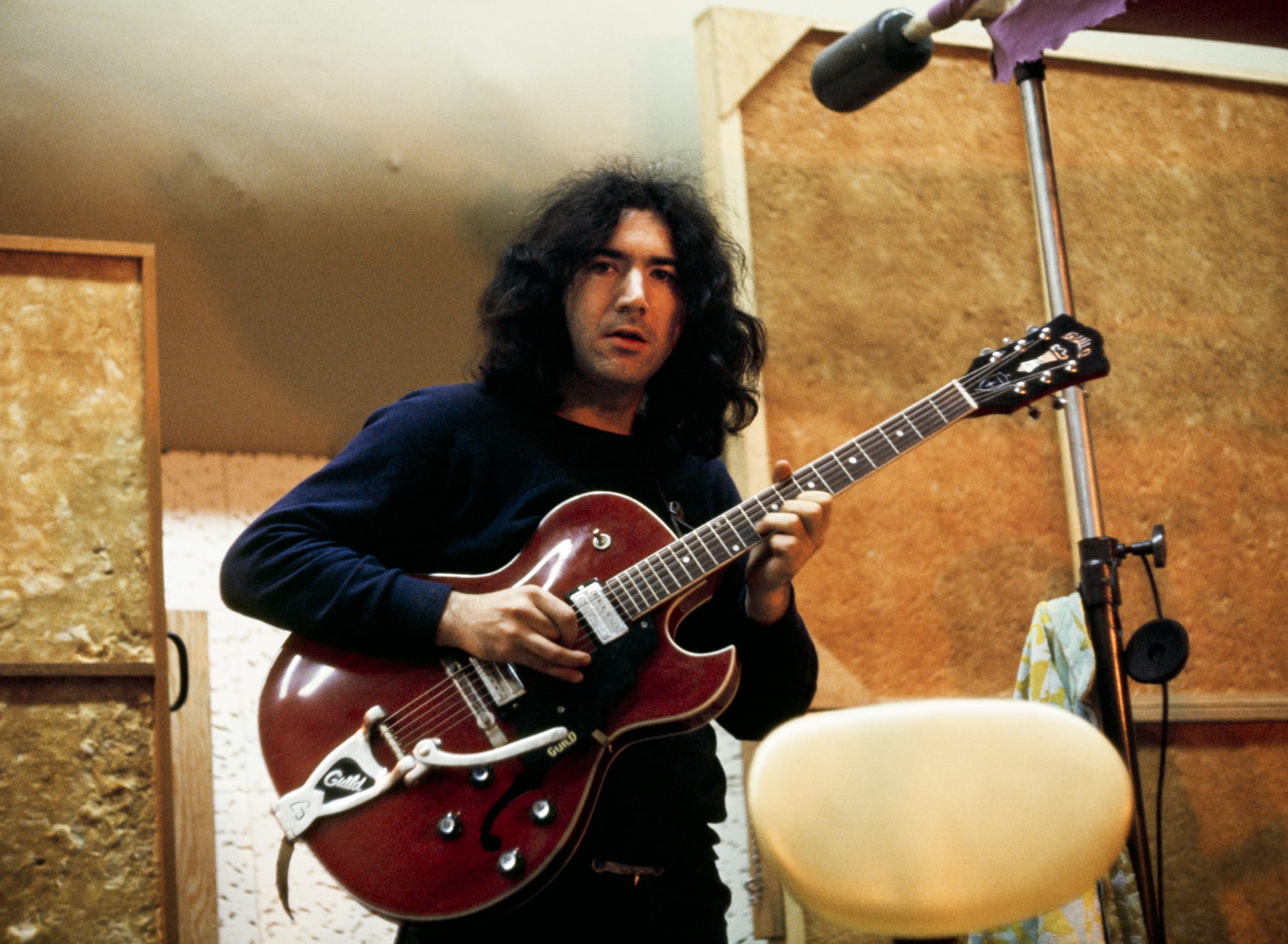
Jerry Garcia in Los Angeles California recording the first Grateful Dead record for Warner Brothers record in January 1967.
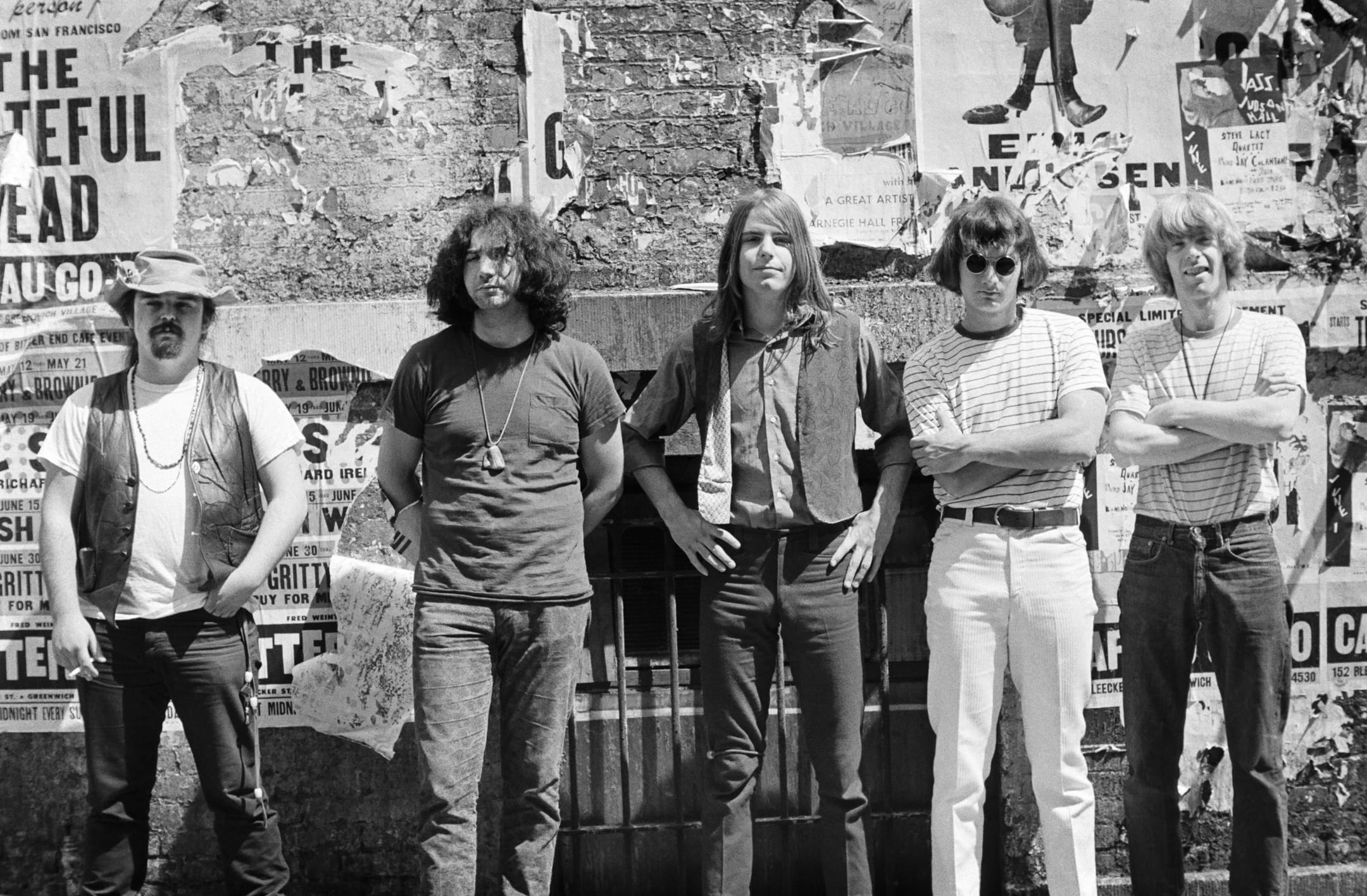
Grateful Dead’s first trip to New York City where they played a multi-night run at the famous Cafe Au Go Go. While in New York they also played a free concert at the Bandshell in Central Park in June 1967.
In my initial scan of the archive, iconic images of the Grateful Dead, Janis Joplin, and Neal Cassady revealed themselves. These images seemed obvious to me at first – celebrities, familiar faces, clear choices to put out to the world. But as I continued to dig, I discovered an underlying and fascinating story. The psychedelic journey and presence of Timothy Leary was woven throughout these photos. The impact that Leary had on the music, art, activism, and fashion of the times is undeniable. I always knew Tim Leary was a psychedelic icon, and after seeing Rakow’s photos I was more curious than ever about what that meant.
The 1960s were a transformative era, marked by cultural upheavals and a quest for alternative lifestyles. At the forefront of this movement was Dr. Timothy Leary, a prominent American psychologist and counterculture figure who gained widespread notoriety in the 1960s for his advocacy of psychedelic substances, particularly LSD, and his exploration of consciousness expansion. Leary’s famous mantra, “Turn On, Tune In, and Drop Out,” encapsulated the spirit of a generation seeking enlightenment, freedom, and a break from societal norms. The phrase was first uttered by Leary during the Human Be-in on January 14, 1967, a pivotal moment at the peak of the Summer of Love.
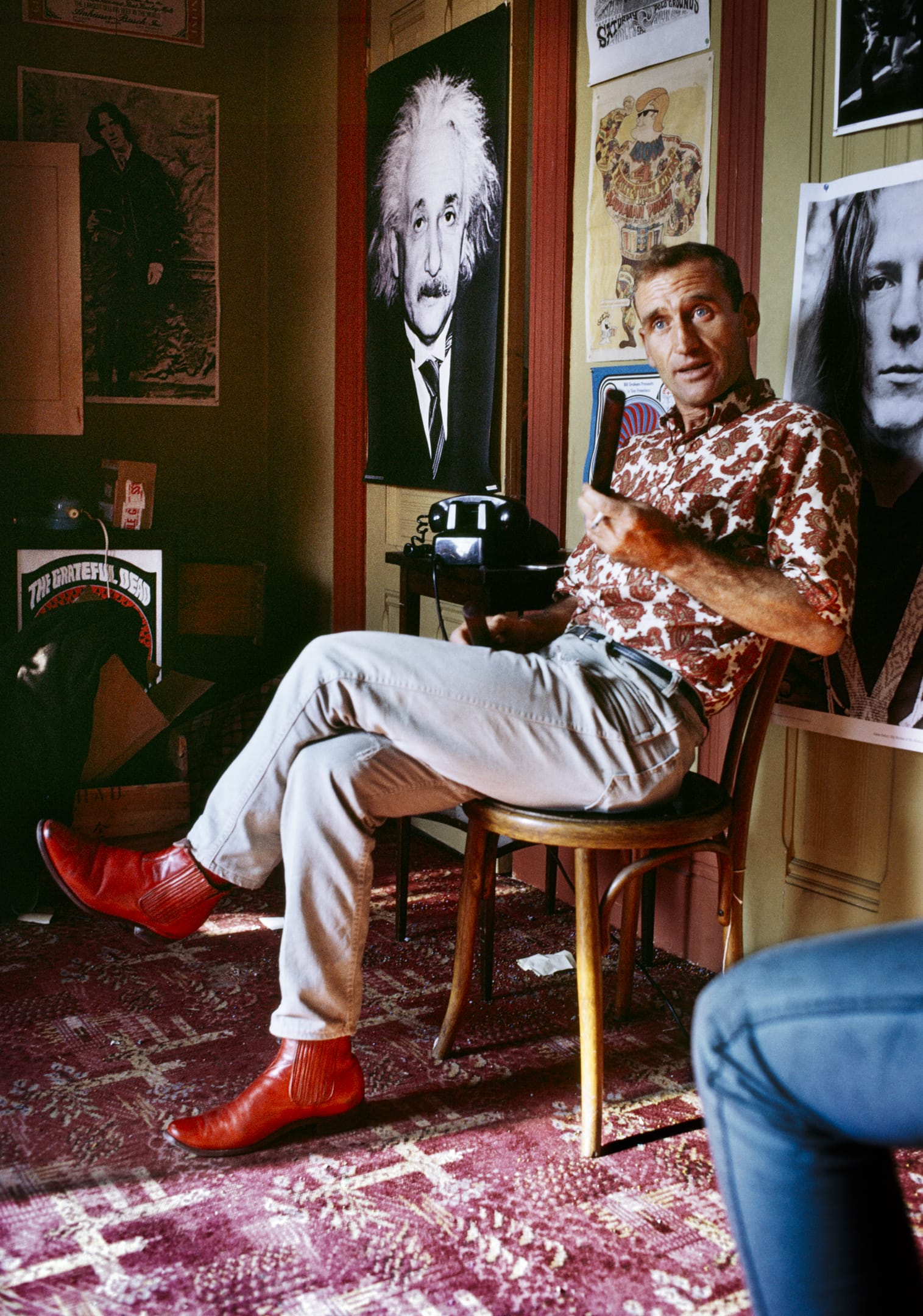
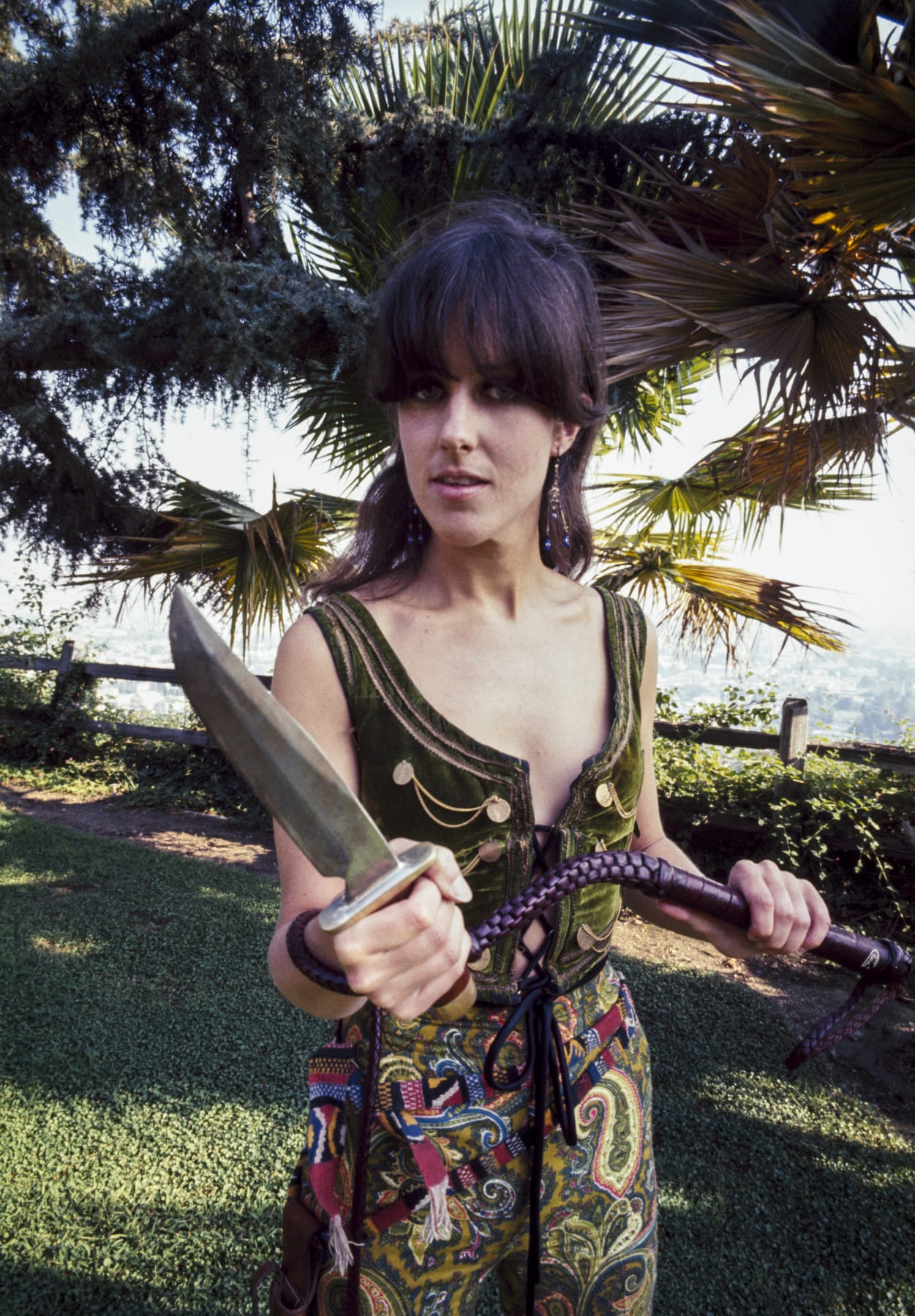
Left: Neal Cassady sitting in the upstairs parlor at the Grateful Dead’s home at 710 Ashbury in San Francisco, CA in June of 1967. Cassady had already become a legendary beat icon when Jack Kerouac recreated Cassady as Dean Moriaty in his groundbreaking novel “On The Road.”
Right: Grace Slick of Jefferson Airplane in Fall of 1967. Rakow was around the Jefferson Airplane frequently as both the Grateful Dead and Airplane performed together frequently including a trip to Montreal, Canada for Expo ‘67.
The Human Be-in, a gathering of counterculture luminaries in Golden Gate Park, served as the backdrop for Leary’s proclamation. Against a psychedelic tapestry of people, movement and the ethereal sounds of the era’s music, Leary urged the youth to “Turn On” to new experiences, “Tune In” to higher consciousness, and “Drop Out” of the conformist society that stifled their potential. This momentous event set the stage for a cultural revolution, and Rakow’s lens was there to capture the kaleidoscope of emotions and colors that defined the occasion.
That psychedelic revolution has transformed, evolved, and mutated over the ensuing decades, and in the present day we see it taking fascinating new shapes, from legalization and public acceptance, to use in clinical therapy and over-the-counter consumption. We’re witnessing seeds that were planted in the 60s and 70s come to fruition in front of our eyes in ways that Dr. Leary may have never predicted. These images convey the raw excitement and playful madness – along with an element of danger – in an unprecedented time in our cultural history. LSD and psychedelic culture are on the rise again and it feels important to dig into the past and understand how it began, all those years ago.
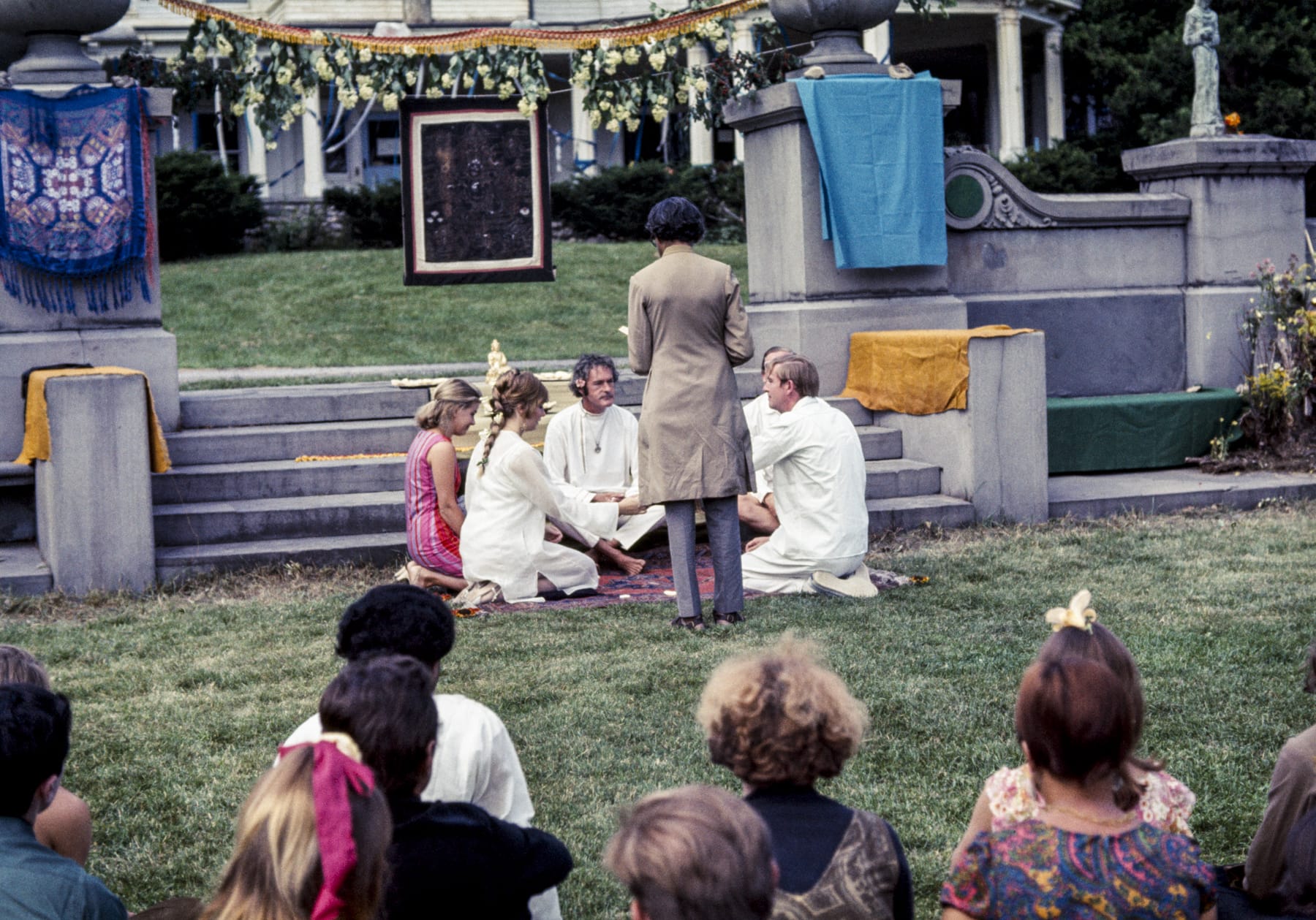
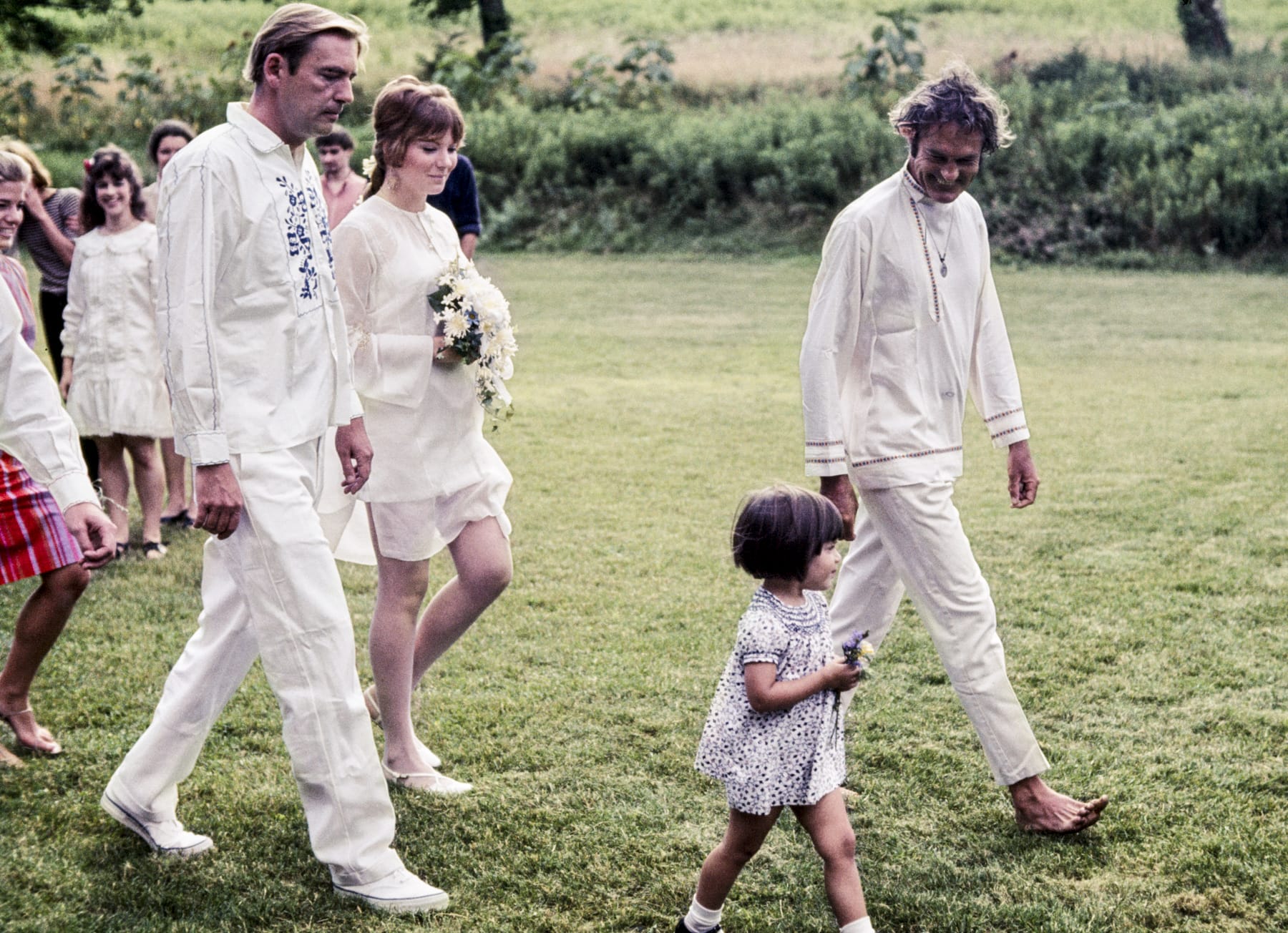
Art Kleps wedding at Millbrook in Upstate New York in August 1967. Art Kleps went on to become the official biographer of the Millbrook Estate.
Rakow’s lens didn’t just freeze moments in time; it etched the psychedelic experiments conducted by Leary and his associates at the Hitchcock Estate in Millbrook, NY, into the annals of history. The Hitchcock estate became a haven for intellectual exploration and consciousness expansion, where individuals sought to unlock the mysteries of the mind through the ingestion of LSD. Leary, along with his associates, including Richard Alpert (later known as Ram Dass) and Ralph Metzner, established a communal living experiment at the Hitchcock Estate in Millbrook, New York, during the mid-1960s. The estate served as a hub for their pioneering research into the effects of psychedelics on the human mind and consciousness. It became a gathering place for intellectuals, artists, and spiritual seekers, fostering an environment of free thought and experimentation. The Millbrook community played a pivotal role in shaping the counterculture movement of the 1960s, leaving a lasting impact on the cultural and social landscape of the time. Despite its eventual dissolution due to legal and societal pressures, the legacy of Timothy Leary and his associates at Millbrook remains a significant chapter in the history of psychedelic exploration and the pursuit of expanded human consciousness.
Leary’s advocacy for psychedelics drew the attention of authorities, leading to his imprisonment. Timothy Leary’s life took a dramatic turn in 1970 when he took the hit for his daughter carrying marijuana and was convicted of possession and sentenced to a prison term. Leary, known for his countercultural activities and advocacy of psychedelic substances, was incarcerated at the California Men’s Colony. However, in a surprising turn of events, Leary managed to escape from prison with the help of the Weather Underground. For a fee of $25,000 paid to them by The Brotherhood of Eternal Love, the radical group helped smuggle Leary out of prison. After successfully fleeing, Leary and his wife Rosemary went on the run, seeking refuge in Algeria under the protection of the Brotherhood of Eternal of Love along with fellow fugitive Eldreidge Cleaver of the Black Panthers. In Algeria and Switzerland, Rakow visited Leary while on the run, providing a visual narrative of a countercultural icon navigating the complexities of a world in flux.
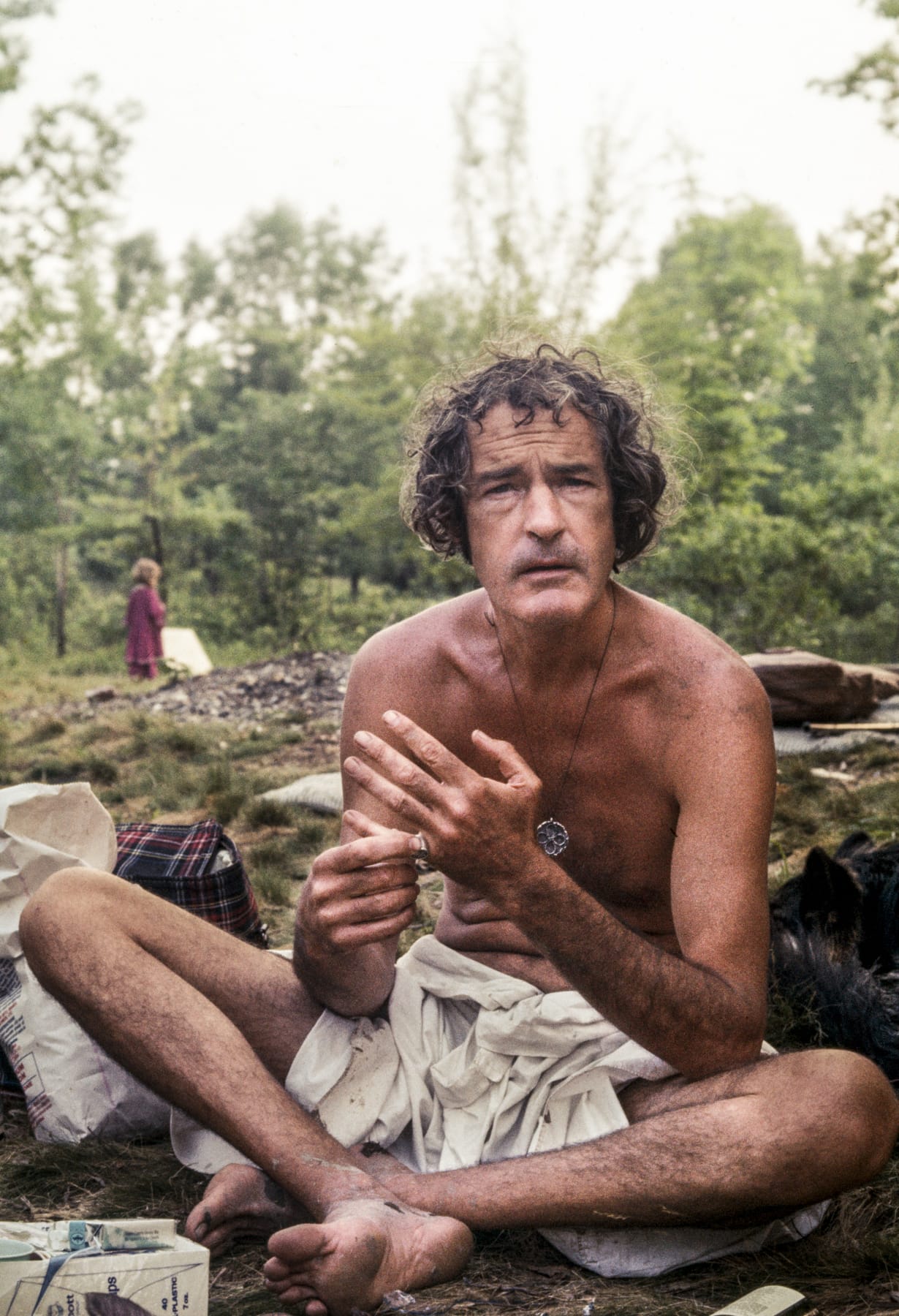
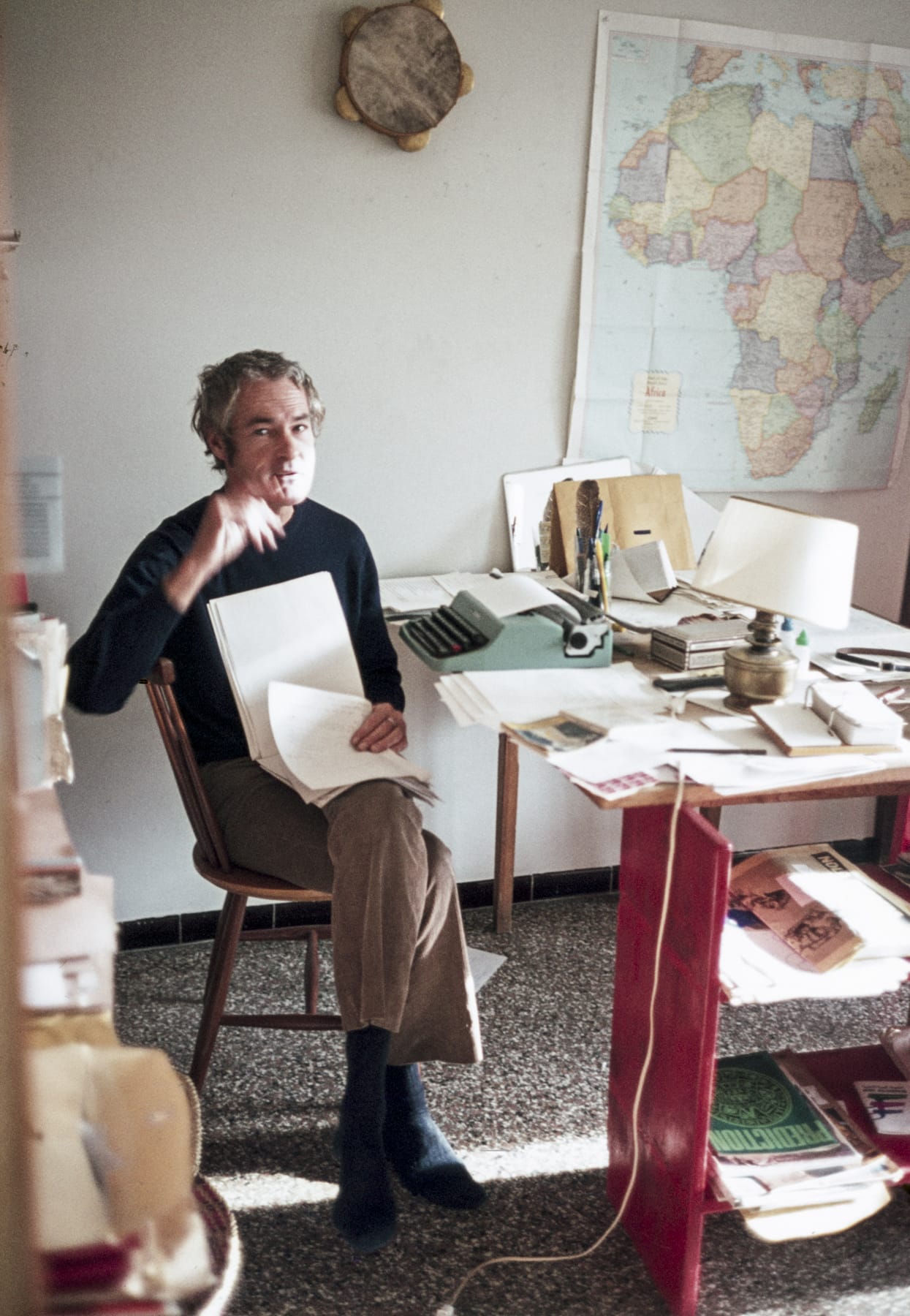
Left: Timothy Leary getting spiritual at Millbrook in the Fall of 1967.
Right: Timothy Leary photographed on the run in Algeria after escaping from prison. Leary seen here in the office of he shared with Black Panther leader Eldridge Cleaver also a fugitive on the run - February 1971
With all the archives that Retro Photo Archive works with, there is an underlying thread of nostalgia. We often find that what’s trending now reflects what we have collectively experienced in the past. These images from Ron Rakow really imbue a sense of nostalgia, both in people that were there and in people that wouldn’t be born until decades later. I love being part of discovering these unseen slivers of pop culture from the 1960s and 70s. The music, the fashion, the naivety of the times are all very appealing to me personally. Ron Rakow’s photography serves as a visual time capsule, encapsulating the essence of an era defined by rebellion, exploration, and a relentless pursuit of freedom. Through his lens, we witness not only the evolution of Timothy Leary’s mantra but also the broader cultural shift that defined the psychedelic zeitgeist of the 1960s. Rakow’s vibrant and colorful images stand as a testament to a moment in history when individuals sought to “Turn On, Tune In, and Drop Out” in their quest for a new consciousness and a world beyond the confines of societal norms.
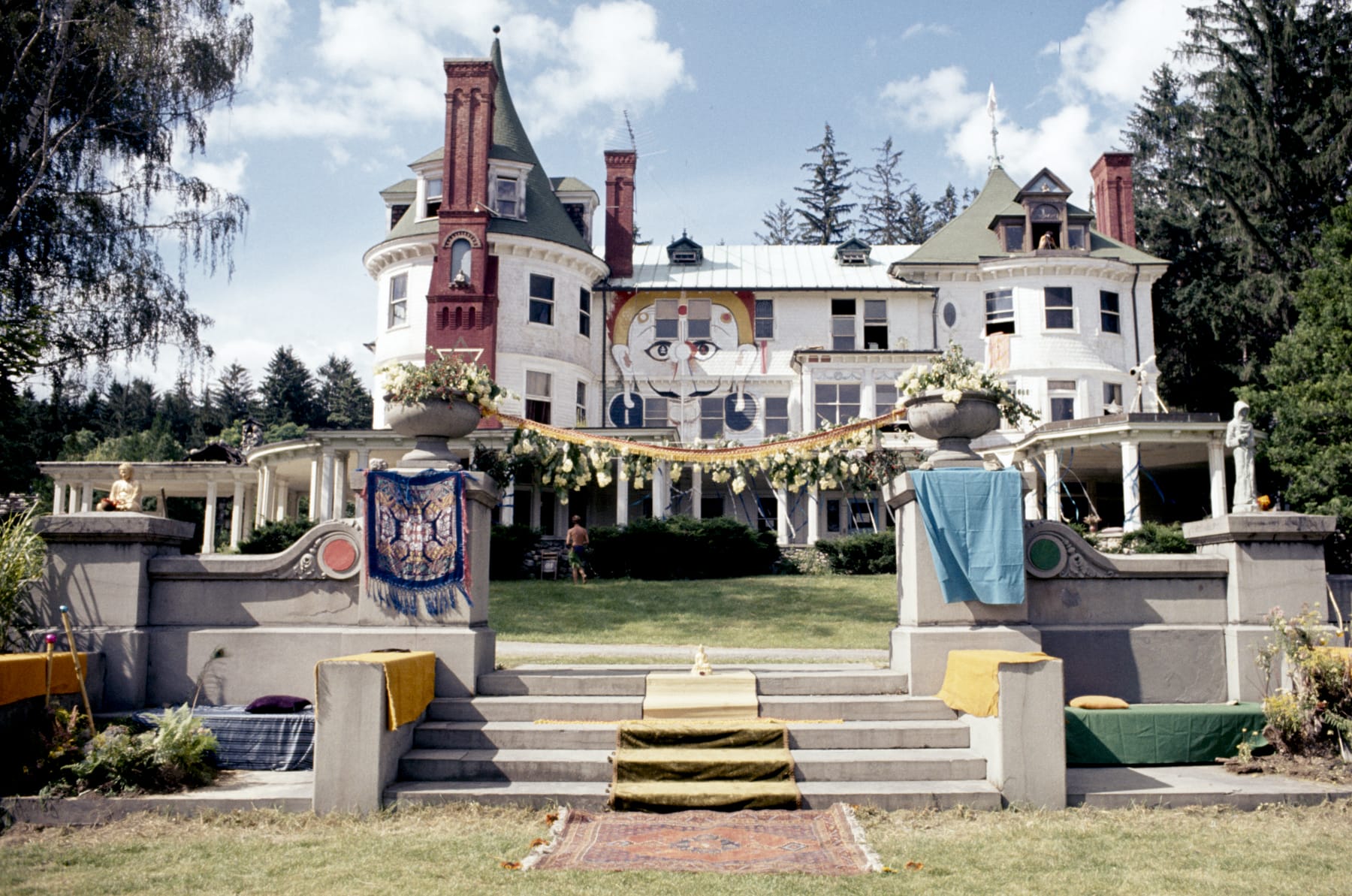
Millbrook Estate where Timothy Leary and Ram Das conducted intentional guided LSD trips for the adventurous of the time - August 1967